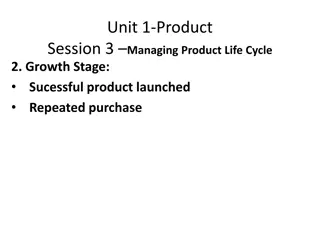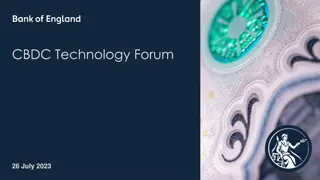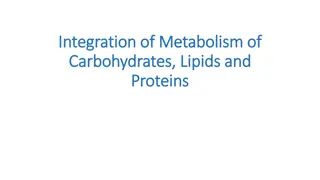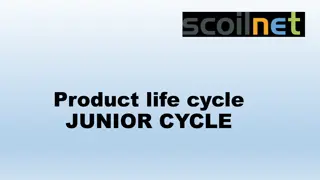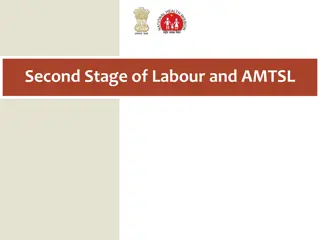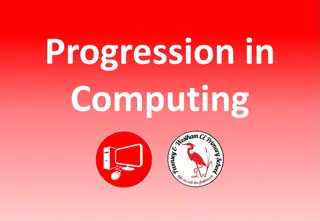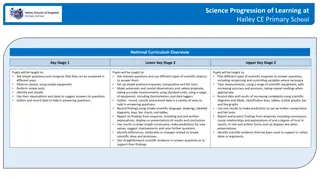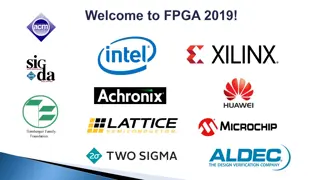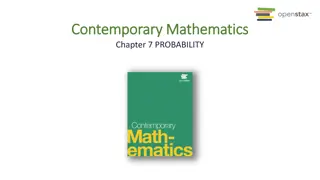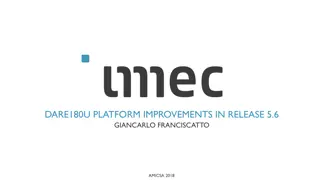Design & Technology Learning Journey at Key Stage 3
Explore the ADT Design & Technology Curriculum Mapping and Learning Journey at Key Stage 3, focusing on the iterative design process. Dive into the essential concepts, skills, and experiences that students will encounter in this engaging educational pathway.
Download Presentation

Please find below an Image/Link to download the presentation.
The content on the website is provided AS IS for your information and personal use only. It may not be sold, licensed, or shared on other websites without obtaining consent from the author.If you encounter any issues during the download, it is possible that the publisher has removed the file from their server.
You are allowed to download the files provided on this website for personal or commercial use, subject to the condition that they are used lawfully. All files are the property of their respective owners.
The content on the website is provided AS IS for your information and personal use only. It may not be sold, licensed, or shared on other websites without obtaining consent from the author.
E N D
Presentation Transcript
ADT Design & Technology Curriculum Mapping & Learning Journey Key Stage 3
ADT Design Technology Learning Journey Key Stage 3 & the iterative design process Key stage 3 Through a variety of creative and practical activities, pupils should be taught the knowledge, understanding and skills needed to engage in an iterative process of designing and making. They should work in a range of domestic and local contexts [for example, the home, health, leisure and culture], and industrial contexts [for example, engineering, manufacturing, construction, food, energy, agriculture (including horticulture) and fashion]. When designing and making, pupils should be taught to: Design use research and exploration, such as the study of different cultures, to identify and understand user needs identify and solve their own design problems and understand how to reformulate problems given to them develop specifications to inform the design of innovative, functional, appealing products that respond to needs in a variety of situations use a variety of approaches [for example, biomimicry and user-centered design], to generate creative ideas and avoid stereotypical responses develop and communicate design ideas using annotated sketches, detailed plans, 3-D and mathematical modelling, oral and digital presentations and computer-based tools Make select from and use specialist tools, techniques, processes, equipment and machinery precisely, including computer- aided manufacture select from and use a wider, more complex range of materials, components and ingredients, taking into account their properties Evaluate analyze the work of past and present professionals and others to develop and broaden their understanding investigate new and emerging technologies test, evaluate and refine their ideas and products against a specification, taking into account the views of intended users and other interested groups understand developments in design and technology, its impact on individuals, society and the environment, and the responsibilities of designers, engineers and technologists Technical knowledge understand and use the properties of materials and the performance of structural elements to achieve functioning solutions understand how more advanced mechanical systems used in their products enable changes in movement and force understand how more advanced electrical and electronic systems can be powered and used in their products [for example, circuits with heat, light, sound and movement as inputs and outputs] apply computing and use electronics to embed intelligence in products that respond to inputs [for example, sensors], and control outputs [for example, actuators], using programmable components [for example, microcontrollers]. PG Online modules used to deliver & measure student progression (see overleaf)
ADT Design & Technology Learning Journey Key Stage 3: Curriculum delivery model Over the 3 years of KS3 students will undertake 2 Design & Make Activities each year. Alongside this students will complete the PG Online Units which will support the above and extend their Technical Knowledge. These Units have taught content, homework and tests to support the above. The structure is designed to prepare students who wish to continue to study Design & Technology at KS4 & KS5. Design through sketching & modelling UNIT 7.1 Introduction to D&T Communication skills UNIT 7.2 Introduction to practical LED Light Desk Tidy Problem solving Materials classification & properties Portfolio approach reflecting the AOs at GCSE (50%) Technical knowledge using PG Online assessments & unit tests reflecting the terminal exam at GCSE (50%) Technical Knowledge Fun ction ality and aest hetic s 3D printi ng and prot otypi ng Mecha nical syste ms & move ment Pro ble m solv ing Designin g through sketching and modelling Materials classificat ion & propertie s Forces & stresse s Innovation through iterative design Electro nic syste ms Proble m solving Year Unit Design & Make Activities Introduction to D&T Communication Skills 7.1 7 Introduction to practical LED Light/Desk Tidy 7.2 Branding & Market forces POSDU 8.1 8 Wearable technologies/Moving toy 8.2 Recycling Upcycling Contemporary Lighting 9.1 9 Batch Production Jewelry 9.2
ADT Design & Technology Learning Journey Key Stage 3: Design & Make Activities Over the 3 years of KS3 students will undertake 2 Design & Make Activities each year. The above will mirror the NEA that the students will undertake at KS4 & KS5. Structure of portfolio Identifying and investigating design possibilities Producing a specification Generating design ideas Developing design ideas Making Evaluation In the spirit of the iterative design process, the above should be awarded holistically where they take place and not in a linear manner Maximum marks Assessment Objective Section Criteria Research the design challenge resulting in a design brief specification Research 1 10 Generating design ideas 10 2 Design/Make Developing design ideas 10 3 Realising design ideas 20 Analysing and evaluating Evaluate 4 10 TOTAL 60
ADT Design & Technology Learning Journey Key Stage 3: Design & Make Activities Over the 3 years of KS3 students will undertake 2 Design & Make Activities each year. The above will mirror the NEA that the students will undertake at KS4 & KS5. Unit 8.1 Unit 9.1 Unit 7.1 Branding & Market forces POSDU Recycling Upcycling Contemporary Lighting Introduction to D&T Communication Skills Unit 7.2 Unit 8.2 Unit 9.2 Introduction to practical LED Light/Desk Tidy Integration of technology Wearable technologies/Moving toy Batch Production Jewelry
ADT Design & Technology Learning Journey Year 7 (T-4/T4+) Key to success TECHNICAL KNOWLEDGE Assessment and reporting descriptors PROGRESS DESIGN MAKE EVALUATE Specific and relevant research leads a detailed specification, reflecting the design and manufacture requirements for a clearly identified target market Imaginative, innovative ideas have been developed using appropriate techniques, considering ongoing research, physical modelling has been used appropriately to develop concepts. Detailed testing and evaluation, is used appropriately throughout the design and manufacturing process. The evaluation reflects the need for further development. Design portfolio is concise and focussed. All decisions are clearly communicated. Process is legible and easily understood. Good S.P.G. Final outcome shows a high level of making, using appropriate materials and techniques, including CAD/CAM. Student has worked independently and applied quality control. You are secure in all knowledge and skills covered in the curriculum and is performing above their expected age-related attainment Exceeding target 80% > Clear research leads to some detail in the specification, reflecting the design and manufacture requirements for an identified target market Ideas demonstrate a degree of creativity through two-dimensional mediums and physical modelling Appropriate testing and evaluation with most aspects of the final outcome being tested against specification. Improvements identified. Design portfolio shows some skill in communication techniques. Decisions are communicated clearly. Limited errors in S.P.G. Final outcomes shows a good level of making, appropriate techniques/materials have been used. Quality control has been applied. You are secure in all knowledge and skills covered in the curriculum and are working at your expected age-related attainment On target 65% > Final outcome is largely complete and demonstrates a basic level of making and finishing. Materials and equipment have been used correctly and safely. There is evidence of quality control. Some testing and evaluation leading to some improvements to the product suggested as a result. Design portfolio shows limited use of appropriate techniques. Limited explanation of the design process given. S.P.G. requires improvement Basic research leads to a simple specification, reflecting the needs of the target market Ideas show some variation, reflected in a limited design strategy. some parts have been modelled. You are mostly secure in the knowledge and skills covered in the curriculum and are working well to close any gaps, so that you can achieve age-related attainment On track to achieve target 50% > Final outcome incomplete and reflects an undemanding level of making. Student has required assistance in the production of final outcome. Limited evidence of quality control. Minimal testing and evaluation throughout the process. Limited reference to future improvements. Design portfolio shows simplistic communication. Limited grasp of process. Numerous errors in S.P.G. You are secure in some knowledge and skills covered in the curriculum and needs some support to close gaps, so that you can achieve age-related attainment Limited research leads to a minimal specification, considering some user needs. Ideas lack imagination and show minimal development. Working towards target 35%> Final outcome incomplete and reflects an undemanding level of making. Student has required assistance at each stage of the making process. No evidence of quality control. No testing and evaluation evident throughout the process. No reference to future improvements. Design portfolio shows simplistic communication. Little or no grasp of process. Numerous errors in S.P.G. throughout. You are not on track to have the knowledge and skills covered in the curriculum and needs significant support to achieve age-related attainment Limited research leads to a basic specification, with little or no consideration of the intended user. Ideas are basic and predictive and show little development. Off target 35% < Design through sketching & modelling Problem solving Materials classification & properties
ADT Design & Technology Learning Journey Year 7.1 Curriculum Map Week Design & Make Activity: Unit 7.1 PGOnline 1 L1 2D & 3D sketching skills Research the design challenge resulting in a design brief specification 2 3 L2 Turning 2D into 3D 4 5 Generating design ideas L3 Perspective drawing 6 7 L4 Physical Modelling 8 Developing design ideas 9 L5 IT Literacy 10 11 L6 Computer Aided Design 12 Realizing design ideas 13 14 15 16 17 Analysis and evaluation Assessment portfolio 18 Assessment test
ADT Design & Technology Learning Journey Year 7.1 Problem solving Student progress Le ar ni ng Ou tc o m es for th e un it -4 4 4+ All students should be able to: Most pupils will be able to: Some pupils will be able to: Determine user needs through product analysis Show how a specification is used when designing and testing Differentiate between the terms consumer- and focus groups Create a specification based on the needs of different consumers and focus groups Generate a range of appropriate ideas for and empathise with disabled users Generate creative design solutions for a disability Demonstrate an iterative design process Develop and improve design ideas using prototypes Experiment with materials to create personalised and ergonomic designs Offer constructive criticism, explain and justify potential problems and offer solutions List different ways to research a design problem Define the terms: user, client, target market and ergonomics Explain what a product analysis is Create a design specification Recognise the terms consumer- and focus groups Generate ideas designed for disabled users Identify impairments and empathise with disabled user groups Explain the iterative design process Make changes to design ideas using prototypes Personalise a design idea Test and evaluate and idea individually and as part of a team Identify problems with a design Evaluate, compare and suggest improvements to existing products Create a specification based on research which is thorough, technical and measurable Analyse impairments to empathise deeply with disabled user groups Generate creative and innovative design solutions for a disability Use iterative design to make creative leaps to generate refined solutions Technical knowledge using PG Online assessments & unit tests reflecting the terminal exam at GCSE (50%)
ADT Design & Technology Learning Journey Year 7.1 Designing though sketching & modelling Student progress Lear ning Out com es for the unit -4 4 4+ All students should be able to: Most pupils will be able to: Some pupils will be able to: Demonstrate an ability to sketch ideas in 2D Use a variety of mark making techniques to express their ideas on paper Effectively add depth and form using shading Understand how to create oblique and isometric views of simple forms Define perspective , horizon line and vanishing point and understand how they are used to create a perspective drawing Be able to create an accurate net for a cube and a pyramid Understand the importance of creating 3D physical models Work with materials and equipment to make physical models Understand the terms brief and specification Understand computer aided design (CAD) and the opportunities it offers designers in product design and development Demonstrate an ability to use Solidworks to produce effective 3D renderings of a design concept Technical knowledge using PG Online assessments & unit tests reflecting the terminal exam at GCSE (50%) Produce oblique and isometric drawings of simple shapes Effectively enhance their 3D sketches using shading Create a single-point perspective drawing Create a two-point perspective drawing Be able to create accurate nets for a variety of shapes Select suitable materials and equipment to make effective physical models Demonstrate an ability to objectively evaluate their ideas against set criteria Explain how CAD can be used at various stages of product development Demonstrate an ability to use Solidworks to produce several accurate 3D renderings of their design concepts Be able to produce oblique and isometric drawings of complex forms Create single-point perspective drawings of their design ideas Create two-point perspective drawings of their design ideas Make effective scale models of their design ideas Demonstrate an ability to use Solidworks to produce accurate, detailed renderings of their design concepts
ADT Design & Technology Learning Journey Year 7.2 Curriculum Map Week Design & Make Activity: Unit 7.2 PGOnline 1 L1 Identifying user needs Research the design challenge resulting in a design brief specification 2 3 L2 Specification development 4 5 Generating design ideas L3 Design for the disabled (inclusive design) 6 7 L4 Problem solving 8 Developing design ideas 9 L5 Personalized design 10 11 L6 Critical evaluation 12 Realizing design ideas 13 14 15 16 17 Analysis and evaluation Assessment portfolio 18 Assessment test
ADT Design & Technology Learning Journey Year 7.2 Materials classification & properties Student progress Each of the following learning outcomes apply five key material areas: Papers and boards Natural and manufactured timbers Metals and alloys Polymers Textiles -4 All students should be able to: Lear ning Out com es for the unit 4 4+ Most pupils will be able to: Some pupils will be able to: Know the primary sources of materials for producing a variety of materials in each of five key material areas Be able to recognise and characterise different types of materials in each key area Understand how the physical and working properties of a material products affect their performance Consistently select the most appropriate material appropriate for a given task Technical knowledge using PG Online assessments & unit tests reflecting the terminal exam at GCSE (50%)
ADT Design & Technology Learning Journey Year 8 Key to success TECHNICAL KNOWLEDGE Assessment and reporting descriptors PROGRESS DESIGN MAKE EVALUATE Specific and relevant research leads a detailed specification, reflecting the design and manufacture requirements for a clearly identified target market Imaginative, innovative ideas have been developed using appropriate techniques, considering ongoing research, physical modelling has been used appropriately to develop concepts. Detailed testing and evaluation, is used appropriately throughout the design and manufacturing process. The evaluation reflects the need for further development. Design portfolio is concise and focussed. All decisions are clearly communicated. Process is legible and easily understood. Good S.P.G. Final outcome shows a high level of making, using appropriate materials and techniques, including CAD/CAM. Student has worked independently and applied quality control. You are secure in all knowledge and skills covered in the curriculum and is performing above their expected age- related attainment Exceeding target 80% > Appropriate testing and evaluation with most aspects of the final outcome being tested against specification. Improvements identified. Design portfolio shows some skill in communication techniques. Decisions are communicated clearly. Limited errors in S.P.G. Clear research leads to some detail in the specification, reflecting the design and manufacture requirements for an identified target market Ideas demonstrate a degree of creativity through two-dimensional mediums and physical modelling You are secure in all knowledge and skills covered in the curriculum and are working at your expected age-related attainment Final outcomes shows a good level of making, appropriate techniques/materials have been used. Quality control has been applied. On target 65% > Final outcome is largely complete and demonstrates a basic level of making and finishing. Materials and equipment have been used correctly and safely. There is evidence of quality control. Some testing and evaluation leading to some improvements to the product suggested as a result. Design portfolio shows limited use of appropriate techniques. Limited explanation of the design process given. S.P.G. requires improvement You are mostly secure in the knowledge and skills covered in the curriculum and are working well to close any gaps, so that you can achieve age-related attainment Basic research leads to a simple specification, reflecting the needs of the target market Ideas show some variation, reflected in a limited design strategy. some parts have been modelled. On track to achieve target 50% > Final outcome incomplete and reflects an undemanding level of making. Student has required assistance in the production of final outcome. Limited evidence of quality control. Minimal testing and evaluation throughout the process. Limited reference to future improvements. Design portfolio shows simplistic communication. Limited grasp of process. Numerous errors in S.P.G. You are secure in some knowledge and skills covered in the curriculum and needs some support to close gaps, so that you can achieve age-related attainment Limited research leads to a minimal specification, considering some user needs. Ideas lack imagination and show minimal development. Working towards target 35%> Final outcome incomplete and reflects an undemanding level of making. Student has required assistance at each stage of the making process. No evidence of quality control. No testing and evaluation evident throughout the process. No reference to future improvements. Design portfolio shows simplistic communication. Little or no grasp of process. Numerous errors in S.P.G. throughout. You are not on track to have the knowledge and skills covered in the curriculum and needs significant support to achieve age-related attainment Limited research leads to a basic specification, with little or no consideration of the intended user. Ideas are basic and predictive and show little development. Off target 35% < Forces & structures Electronic systems Mechanical systems & movement
ADT Design & Technology Learning Journey Year 8.1 Curriculum Map Week Design & Make Activity: Unit 8.1 PGOnline 1 Research the design challenge resulting in a design brief specification 2 L1 Understanding forces & stresses 3 4 L2 Reinforcing & stiffening 5 Generating design ideas 6 L3 Structures & strength 7 8 Developing design ideas L4 Bridge building 9 10 L5 Testing & evaluating 11 12 L6 Material properties Realizing design ideas 13 14 Assessment portfolio 15 Assessment test 16 17 Analysis and evaluation L1 Motion & movement 18
ADT Design & Technology Learning Journey Year 8.1 Forces & structures Student progress Lear ning Out com es for the unit -5 5 5+ All students should be able to: Most pupils will be able to: Some pupils will be able to: Understand the impact of forces and stresses on different materials and objects Explain how a material may be reinforced or stiffened using a range of techniques Explain how bending, lamination, folding, webbing and interfacing affects the strength of a material Name and describe each of the different forces and stresses Recognise how materials have been stiffened or reinforced Give examples of the use of bending, lamination, folding, webbing and interfacing Explain the effects of a change in magnitude and direction of a force on a specific material or object Describe the specific techniques used to strengthen products made from differing materials Technical knowledge using PG Online assessments & unit tests reflecting the terminal exam at GCSE (50%)
ADT Design & Technology Learning Journey Year 8.2 Curriculum Map Week Design & Make Activity: Unit 8.2 PGOnline 1 L2 Cams & followers Research the design challenge resulting in a design brief specification 2 3 L3 Drive mechanisms 4 5 Generating design ideas L4 Card based automata 6 7 L6 Team building 8 Developing design ideas 9 Assessment portfolio 10 Assessment test 11 12 L1 Circuit construction principle Realizing design ideas 13 14 L2 Feedback & timing systems 15 16 L3 Programming 17 Analysis and evaluation Assessment portfolio 18 Assessment test
ADT Design & Technology Learning Journey Year 8.2 Electronic systems Student progress -5 5 5+ All students should be able to: Most pupils will be able to: Some pupils will be able to: Know how microcontrollers can be used to solve problems Understand the basic principles of a switching circuit Recognise basic electronic components and their respective circuit symbols Create simple circuits combining, power supplies, switches, bulbs, resistors and LED s. Understand the difference between digital and analogue signals Use basic flowchart operations to solve problems Create a digital decision feedback loop Understand the use of delays and timing systems Understand the difference between wait and pause Turn outputs on and off with a pause or wait Create a basic timing circuit Embed music and tunes into simple flowcharts Solve basic problems by creating flowcharts and circuits Create a basic counting circuit Describe the differences between a range of visual displays used to show numbers Describe the differences between a number of audio outputs used to play sounds Understand the difference between the functions Sound and Tune Know how to select different microcontrollers and why they may be required Explain the need to be able to count events using increments and/or decrements Identify a number of reasons as to why a program will not download to a physical circuit Lear ning Out com es for the unit Develop solutions to complex problems by creating flowcharts and circuits Integrate routines and subroutines into flowcharts Evaluate the requirements for a circuit and to select an appropriate microcontroller Analyse circuits and flowcharts to identify faults and perform the corrections needed Technical knowledge using PG Online assessments & unit tests reflecting the terminal exam at GCSE (50%)
ADT Design & Technology Learning Journey Year 8.2 Mechanical systems & movement Student progress Lear ning Out com es for the unit -5 5 5+ All students should be able to: Most pupils will be able to: Some pupils will be able to: Understand how different levers and linkages gain a mechanical advantage and make some tasks easier. Understand the meaning of the term velocity ratio and how to calculate it in a given system Recognise and understand the operation of specialist levers, linkages and rotary mechanisms Be fully engaged, focused and independent in the completion of set tasks and activities Initiate independent solutions to design and manufacturing problems as they arise Express clearly with confidence and clarity how different mechanisms have advantages and disadvantages in different applications Know and understand subject specific vocabulary using complex words e.g. lubrication, idler, velocity and transmission Give examples of where the different forms of motion can be found Name the different orders of lever and give example of where they can be found Understand how different mechanisms can change the direction of an input motion into a different output motion Understand how different sized rotary components on the input and output shafts can speed up or slow down motion Model in card and other materials to make simple prototype mechanisms Have a basic understanding of the positive and negative impact that friction can have on a mechanism Work effectively, both individually and in groups with some teacher support or guidance Have a developing awareness of basic subject specific language e.g. input, output, load, effort and fulcrum Recognise and name the four different forms of movement. Know how levers and linkages work and can make moving a load easier Understand how an input motion can be changed to a different output motion by a mechanism Recognise the differences in different rotary cams and how they interact with different followers Use different cams and followers to design mechanisms Recognise different drive train mechanisms and understand how they transmit motion and change its magnitude and direction Develop an understanding of, and be capable in the selection of different mechanical components to make a working mechanism Technical knowledge using PG Online assessments & unit tests reflecting the terminal exam at GCSE (50%)
ADT Design & Technology Learning Journey Year 9 (T6 T6+) Key to success TECHNICAL KNOWLEDGE Assessment and reporting descriptors PROGRESS DESIGN MAKE EVALUATE Specific and relevant research leads a detailed specification, reflecting the design and manufacture requirements for a clearly identified target market Imaginative, innovative ideas have been developed using appropriate techniques, considering ongoing research, physical modelling has been used appropriately to develop concepts. Detailed testing and evaluation, is used appropriately throughout the design and manufacturing process. The evaluation reflects the need for further development. Design portfolio is concise and focussed. All decisions are clearly communicated. Process is legible and easily understood. Good S.P.G. Final outcome shows a high level of making, using appropriate materials and techniques, including CAD/CAM. Student has worked independently and applied quality control. You are secure in all knowledge and skills covered in the curriculum and is performing above their expected age- related attainment Exceeding target 80% > Appropriate testing and evaluation with most aspects of the final outcome being tested against specification. Improvements identified. Design portfolio shows some skill in communication techniques. Decisions are communicated clearly. Limited errors in S.P.G. Clear research leads to some detail in the specification, reflecting the design and manufacture requirements for an identified target market Ideas demonstrate a degree of creativity through two-dimensional mediums and physical modelling You are secure in all knowledge and skills covered in the curriculum and are working at your expected age-related attainment Final outcomes shows a good level of making, appropriate techniques/materials have been used. Quality control has been applied. On target 65% > Final outcome is largely complete and demonstrates a basic level of making and finishing. Materials and equipment have been used correctly and safely. There is evidence of quality control. Some testing and evaluation leading to some improvements to the product suggested as a result. Design portfolio shows limited use of appropriate techniques. Limited explanation of the design process given. S.P.G. requires improvement You are mostly secure in the knowledge and skills covered in the curriculum and are working well to close any gaps, so that you can achieve age-related attainment Basic research leads to a simple specification, reflecting the needs of the target market Ideas show some variation, reflected in a limited design strategy. some parts have been modelled. On track to achieve target 50% > Final outcome incomplete and reflects an undemanding level of making. Student has required assistance in the production of final outcome. Limited evidence of quality control. Minimal testing and evaluation throughout the process. Limited reference to future improvements. Design portfolio shows simplistic communication. Limited grasp of process. Numerous errors in S.P.G. You are secure in some knowledge and skills covered in the curriculum and needs some support to close gaps, so that you can achieve age-related attainment Limited research leads to a minimal specification, considering some user needs. Ideas lack imagination and show minimal development. Working towards target 35%> Final outcome incomplete and reflects an undemanding level of making. Student has required assistance at each stage of the making process. No evidence of quality control. No testing and evaluation evident throughout the process. No reference to future improvements. Design portfolio shows simplistic communication. Little or no grasp of process. Numerous errors in S.P.G. throughout. You are not on track to have the knowledge and skills covered in the curriculum and needs significant support to achieve age-related attainment Limited research leads to a basic specification, with little or no consideration of the intended user. Ideas are basic and predictive and show little development. Off target 35% < Innovation through iterative design Function & aesthetics
ADT Design & Technology Learning Journey Year 9.1 Curriculum Map Design & Make Activity: Unit 9.1 Week PGOnline 1 Research the design challenge resulting in a design brief specification 2 L1 Identify design context 3 4 L2 Model test evaluate 5 Generating design ideas 6 L3 Prototype 7 8 Developing design ideas L4 Develop test evaluate 9 10 L5 Is it ready? 11 12 L6 Present your progress Realizing design ideas 13 14 Assessment portfolio 15 Assessment test 16 17 Analysis and evaluation L1 Product comparison 18
ADT Design & Technology Learning Journey Year 9.1 Innovation through iterative design Student progress Lear ning Out com es for the unit -6 6 6+ All students should be able to: Most pupils will be able to: Some pupils will be able to: Generate a range of suitable design briefs for the project Generate a range of ideas through sketching and modelling, testing and evaluating Experiment with light and lighting Develop, test and evaluate design ideas through various media Present your design process and favourite prototype Explain how the iterative design process helped you to progress Demonstrate an understanding of ergonomics Test and evaluate your design based on feedback Describe how products are developed using an iterative design process Suggest a possible design brief Experiment with the different ways light can be used Generate design ideas using models, sketches and prototypes Fit components into models Develop the aesthetics and form of your design to appeal to the user Define the following terms: aesthetics, form, ergonomics Differentiate between good design and design for good Apply experiments with lighting to design work Generate refined models and prototypes Use the iterative design process to make creative leaps Technical knowledge using PG Online assessments & unit tests reflecting the terminal exam at GCSE (50%)
ADT Design & Technology Learning Journey Year 9.2 Function & aesthetics Student progress Lear ning Out com es for the unit -6 6 6+ All students should be able to: Most pupils will be able to: Some pupils will be able to: Explain that good design needs to consider and balance both form and function Recognise elements of good design over bad Understand the meaning of the term biomimicry Recognise how and why natural forms and structures are used to inspire design and new materials Recognise where geometric shapes found in nature have been used to create manmade structures Be familiar with a variety of materials that can be used to model naturally inspired forms Demonstrate an understanding of the importance of physical modelling to demonstrate functionality and aesthetics Understand how and why scale models are used Explain the terms form and function Understand what factors make a product aesthetically pleasing Describe different structures found in nature and how they function Recognise the term biomimicry Understand the difference between organic and geometric shapes found in nature Identify geometric shapes in nature Use term organic architecture, in context Recognise where and how architectural examples have been inspired by organic forms Generate their own design ideas inspired by organic forms Demonstrate an ability to incorporate natural forms into design concepts Use simple tools and materials to produce models that convey a design concept Differentiate between form, function and aesthetics Apply the technique of biomimicry to their design work Understand that advancements in engineering and material technology to make complex forms possible Be able to calculate scale without the use of a calculator Demonstrate how geometric shapes found in nature can be used to enhance the form and function of your own work Respond to the challenges of constructing naturally inspired forms and structures creating plausible outcomes Technical knowledge using PG Online assessments & unit tests reflecting the terminal exam at GCSE (50%)
ADT Design & Technology Learning Journey Year 9.2 Curriculum Map Week Design & Make Activity: Unit 9.2 PGOnline 1 L2 Natural structures and systems Research the design challenge resulting in a design brief specification 2 3 L3 Geometric shapes in nature 4 Generating design ideas 5 L4 Organic architecture 6 7 L5 Constructing natural forms Developing design ideas 8 9 L6 Presentation of concepts 10 11 Assessment portfolio 12 Assessment test Realizing design ideas 13 14 15 16 Analysis and evaluation 17 18
ADT Design & Technology Key Stage 3: Student Progress & Tracking Flightpath Current methodology sets targets of T4 6 at KS3 Grading schemes are set for each year of KS3 Students are given an end of year target only Fine levels are used (3 of) and a student is expected to make one full level of progress each year. Progress over year PROGRESS Exceeding target End of term 1 End of term 2 1+ fine levels above target End of term 3 0 fine levels above/below target On target Up to -3 fine levels below target Up to -4 fine levels below target Up to -5 fine levels below target Up to -2 fine levels below target Up to -3 fine levels below target Up to -4 fine levels below target Up to -1 fine levels below target Up to -2 fine levels below target Up to -3 fine levels below target On track to achieve target Working towards target Off target KS3 Tracking Flightpath Fine levels are used (3 of) and a student is expected to make one full level of progress each year. The start point should be based on the previous year s attainment Year 7 8 9 PROGRESS <3+ -4 4 4+ -5 5 5+ 6- 6 6+ -7>
ADT Design & Technology Learning Journey Key Stage 3 Technical Knowledge Design and Technology Units (PG Online Modules) Desig ning throu gh sketc hing and model ling Mate rials classi ficati on & prop ertie s Innovati on through iterative design Mechan ical system s and movem ent Forc es and stres ses Functi onality and aesthe tics 3D The KS3 series of units has been written to satisfy the Curriculum for Design and Technology. They will also support the related Design and Make tasks for each module. These units should be used to support two or more units to ensure full coverage. They will support the learning journey and the design and make tasks. Probl em solvin g Electr onic syste ms printin g and protot yping Use research and exploration, such as the study of different cultures, to identify and understand user needs Identify and solve their own design problems and understand how to reformulate problems given to them De sig n Develop specifications to inform the design of innovative, functional, appealing products that respond to needs in a variety of situations Use a variety of approaches [for example, biomimicry and user-centred design], to generate creative ideas and avoid stereotypical responses Develop and communicate design ideas using annotated sketches, detailed plans, 3D and mathematical modelling, oral and digital presentations and computer-based tools Select from and use specialist tools, techniques, processes, equipment and machinery precisely, including computer-aided manufacture Ma ke Select from and use a wider, more complex range of materials, components and ingredients, taking into account their properties Investigate new and emerging technologies Ev alu ate Test, evaluate and refine their ideas and products against a specification, taking into account the views of intended users and other interested groups Understand developments in design and technology, its impact on individuals, society and the environment, and the responsibilities of designers, engineers and technologists Understand and use the properties of materials and the performance of structural elements to achieve functioning solutions Tec hni cal kn owl ed ge Understand how more advanced mechanical systems used in their products enable changes in movement and force Understand how more advanced electrical and electronic systems can be powered and used in their products [for example, circuits with heat, light, sound and movement as inputs and outputs] Apply computing and use electronics to embed intelligence in products that respond to inputs [for example, sensors], and control outputs [for example, actuators], using programmable components [for example, microcontrollers]
ADT Design & Technology Learning Journey Key Stage 3 Tracking Progress Each unit of work will consist of one design & make task. These tasks will be marked against the criteria on the mark booklet. This will be supported by the PG Online resources linked to each unit. Each of the resources includes classwork/activities & homework and a unit test which can inform student progress. The tracking document is current on the Google Drive but will be migrated Go4schools. The spreadsheet includes the formulas to calculate progress and support marking/reporting. Each unit assessment (highlighted in purple) . These assessment will contribute to a 50 % weighting in conjunction with the design & make activities In the amber column. Colleagues should enter No/Partial/Yes using the first letter of each



